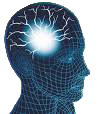“A recent study in Brazil of 5,671 children aged between 5 and 12, found those with migraines were 30% more likely to have below average school performance than those with no headache…..”
Headache and migraine are surprisingly common in young people. For instance it is estimated that migraine affects 2% of five-year-olds and 18% of 13 to 14-year-olds. Tension type headache affects up to 25% of children with other headache types also affecting large numbers.
Unfortunately the head pain is often undiagnosed and untreated. This may be for a number of reasons such as; atypical presentations (symptoms in the young may not be the same as those in adults) or more than one type of headache being present at the same time leading to diagnostic difficulties. Frequently parents and schools do not take the problem seriously and/or are under the mistaken belief that there is no effective treatment.
It is known that head pain is a major cause of school absenteeism, in the worst cases resulting in several months a year of missed school. Needless to say it also has a negative impact on home life, as well as social and sporting activities.
Although the head pain may fall under a typical classification such as;
• Tension type headache (episodic and chronic); a mild to moderate dull headache lasting a few hours with no other symptoms although occasionally there may be associated anxiety or depressed mood.
• Migraine without aura (episodic and chronic); typically moderate to severe throbbing pain aggravated by activity and lasting hours to days. Associated symptoms include nausea/vomiting/light + noise intolerance and dizziness among others.
However it is not uncommon for children and teenagers to suffer from any one of a number of atypical `syndromes, which are different to adult headache types. These include;
1. Atypical migraine with or without aura; mild to severe head pain which may be difficult to describe, sometimes only lasting an hour or two with nausea and vomiting usually present. Aura symptoms consist of visual and/or sensory disturbance, muscle weakness, speech problems and others
.
2. Abdominal migraine; recurrent discrete episodes of dull, occasionally severe abdominal pain with associated nausea/vomiting/lack of appetite/lethargy and possible headache (but not always!). The attacks may last hours to days during which the child will look pale and be unable to participate in usual activities. Rest and sleep results in significant improvement.
3. So called “ Alice in Wonderland” syndrome; a special type of migraine with extreme and bizarre aura symptoms including distorted images, feelings of déjà vu, and hallucinations . Headache is usually but not always present.
4. Benign paroxysmal vertigo; tends to affect younger children (under five) consists of discrete episodes during which the child feels suddenly unsteady, becomes frightened and may fall. Episodes last between a few minutes and a few hours during which the child will also usually feel and look unwell but recovers spontaneously.
5. Post-traumatic headache/migraine; children may experience intense headache, dizziness, confusion, vomiting and lethargy following a minor head injury even in the absence of any significant brain/skull trauma.
Importance of early diagnosis.
Ensuring the early ,accurate diagnosis and expert management of head pain in children and adolescents is essential as the frequency and or severity of attacks can often be reduced by following simple advice regarding lifestyle (food/drink/sleep patterns/exercises etc) or specifically tailored treatment.
Even a moderate reduction of headache days will usually result in less disruption of the Childs/Adolescents education and a significant improvement in quality of life.

